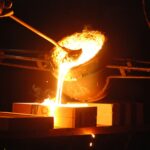The steel industry stands at a pivotal moment in its evolution. After decades of traditional manufacturing processes, a convergence of technological breakthroughs, environmental pressures, and economic forces is fundamentally transforming how steel is produced, processed, and distributed worldwide.
These steel industry trends represent more than incremental improvements—they signal a complete reimagining of manufacturing capabilities.
From artificial intelligence optimizing production lines to sustainable practices reducing carbon footprints, the industry is experiencing its most significant transformation since the introduction of the basic oxygen furnace in the 1950s.
Understanding these emerging patterns is crucial for manufacturers, suppliers, and industry stakeholders who need to position themselves strategically for the decade ahead.
The companies that recognize and adapt to these shifts will gain competitive advantages, while those that resist change risk obsolescence in an increasingly dynamic marketplace.
This analysis examines six critical forces reshaping steel manufacturing, providing insights into the technologies, processes, and strategies that will define the industry’s future trajectory.
Advanced Automation and Robotics Integration
Precision Control Systems
Manufacturing technology has reached unprecedented levels of sophistication in steel production facilities. Modern plants now deploy robotic systems that can handle materials with millimeter-precision accuracy, reducing waste and improving product consistency.
These automated systems monitor temperature variations, chemical compositions, and structural integrity in real-time.
Key developments include:
- Automated quality inspection systems that detect surface defects invisible to human operators
- Robotic material handling reduces workplace injuries and increases throughput
- Predictive maintenance algorithms that prevent costly equipment failures
- Integrated process control linking every stage from raw material input to finished product
Enhanced Equipment Performance
Traditional mechanical components are being revolutionized through automation integration. Components like the shaft mounted speed reducer now incorporate smart sensors that provide continuous performance feedback, enabling proactive maintenance schedules and optimal operational efficiency.
These technological enhancements extend equipment lifespan while reducing energy consumption.
Artificial Intelligence and Machine Learning Applications
Predictive Analytics in Production
AI algorithms analyze vast datasets from production processes to identify patterns and optimize operations.
Machine learning models predict demand fluctuations, allowing manufacturers to adjust production schedules and inventory levels accordingly. This technology reduces overproduction waste while ensuring adequate supply to meet market demands.
Advanced AI applications include:
- Real-time quality prediction based on process parameters
- Energy consumption optimization through intelligent load balancing
- Supply chain forecasting that accounts for global market variables
- Maintenance scheduling that minimizes production interruptions
Process Optimization Through Data Analytics
Manufacturing facilities generate enormous amounts of operational data. AI systems process this information to identify inefficiencies and recommend process improvements.
These insights enable continuous optimization of production parameters, resulting in higher yields and reduced resource consumption.
Sustainable Manufacturing Practices
Carbon Reduction Technologies
Environmental regulations and corporate sustainability commitments are driving significant changes in steel production methods. Companies are investing in technologies that dramatically reduce carbon emissions while maintaining production quality and economic viability.
Sustainable initiatives encompass:
- Hydrogen-based reduction processes are replacing traditional coke-fueled methods
- Electric arc furnace expansion utilizing renewable energy sources
- Waste heat recovery systems that capture and reuse thermal energy
- Recycled material integration increases the percentage of scrap steel in production
Circular Economy Implementation
Steel manufacturers are adopting circular economy principles that minimize waste and maximize resource utilization.
These approaches create closed-loop systems where byproducts from one process become inputs for another, reducing overall environmental impact while improving economic efficiency.
Industry 4.0 and Smart Manufacturing
Connected Production Ecosystems
The Industrial Internet of Things (IIoT) connects every aspect of steel manufacturing operations, creating comprehensive data networks that provide unprecedented visibility into production processes.
These connected systems enable real-time monitoring and control of complex manufacturing operations.
Smart manufacturing features include:
- Sensor networks monitoring equipment performance across entire facilities
- Digital twins that simulate production scenarios before implementation
- Cloud-based analytics are platforms processing data from multiple locations
- Mobile interfaces allowing remote monitoring and control capabilities
Digital Transformation Strategies
Manufacturing technology evolution requires comprehensive digital transformation strategies that integrate new technologies with existing infrastructure.
Successful implementations balance technological advancement with operational continuity, ensuring smooth transitions that maintain production schedules.
Global Supply Chain Evolution
Regionalization and Resilience
Recent global events have highlighted vulnerabilities in extended supply chains, prompting steel manufacturers to develop more resilient distribution networks.
Companies are establishing regional production capabilities that reduce dependence on distant suppliers while improving delivery reliability.
Supply chain innovations include:
- Local sourcing partnerships that reduce transportation costs and delays
- Flexible production capacity that can adapt to demand variations
- Inventory optimization systems that balance carrying costs with availability requirements
- Alternative supplier networks providing backup options during disruptions
Market Diversification Strategies
Steel manufacturers are expanding into new market segments and geographical regions to reduce dependence on traditional industrial customers. This diversification approach creates multiple revenue streams while spreading risk across various economic sectors.
Advanced Materials and Specialty Steel Production
High-Performance Alloy Development
Research and development efforts focus on creating specialized steel grades with enhanced properties for specific applications. These advanced materials command premium prices while serving critical needs in aerospace, automotive, and infrastructure sectors.
Specialty steel developments include:
- Ultra-high strength steels for lightweight automotive applications
- Corrosion-resistant alloys for marine and chemical processing environments
- Heat-resistant grades for power generation and petrochemical facilities
- Magnetic steels for electrical equipment and renewable energy systems
Customization and Niche Markets
Manufacturing capabilities now enable economical production of customized steel grades in smaller quantities. This flexibility allows manufacturers to serve niche markets that require specific material properties, creating opportunities for higher-margin products.
Preparing for Tomorrow’s Steel Industry
The convergence of these trends represents a fundamental shift toward more efficient, sustainable, and technologically advanced steel manufacturing. Companies that successfully navigate this transformation will emerge as industry leaders, while those that fail to adapt risk losing market relevance.
Industrial growth depends on manufacturers’ ability to balance technological investment with operational excellence.
The integration of advanced equipment, intelligent systems, and sustainable practices requires careful planning and phased implementation strategies that maintain production continuity while building future capabilities.
Success in this evolving landscape demands continuous learning, strategic partnerships, and a willingness to embrace change.
The steel manufacturers who thrive in the coming decade will be those who recognize these trends not as challenges to overcome, but as opportunities to create competitive advantages and drive industry innovation forward.




